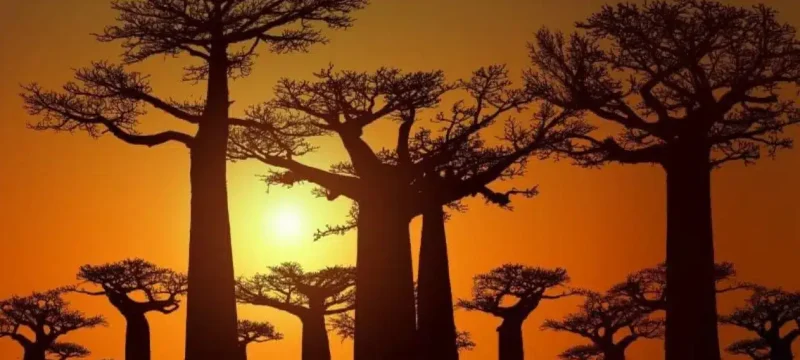The baobab tree is a striking feature in many landscapes, particularly during the dry season when its leafless branches resemble tangled roots sprawling from a thick trunk. Its peculiar appearance has earned it the nickname “upside down tree.” Despite its prominence, the origins and history of the baobab have long puzzled researchers. However, a recent study combining genomic analyses with ecological and geological data sheds light on the baobab’s journey.
The study reveals that the baobab lineage originated in Madagascar around 21 million years ago before spreading to Africa and Australia over the past 12 million years. Madagascar, known for its unique biodiversity, served as the starting point for the baobab’s dispersal. Interestingly, two baobab lineages became extinct in Madagascar but survived elsewhere, one in Africa and one in Australia.
Also Read: Illeism: An Ancient Technique to Cultivate Wiser Thinking
The story of how the baobab reached distant destinations is fascinating. It is believed that baobab seed pods traveled across the Indian Ocean to Africa and Australia, likely carried by vegetation rafts. The Indian Ocean gyre, an oceanic current, played a crucial role in this long-distance dispersal, transporting baobab seed pods from Madagascar to Africa and then to Australia.
Baobabs play significant ecological roles in dry savannah habitats, providing food, shelter, and nesting sites for a variety of wildlife. Their fruits are valuable sources of nutrients and medicines for humans, and their leaves are edible. The trees also attract nocturnal pollinators with their large, sweet-smelling flowers.
Baobabs are renowned for their enormous dimensions, with some species living for thousands of years and boasting massive trunks and extensive root systems. In Africa, baobabs face threats from elephant damage, as elephants sometimes damage the trunks to access water.
Beyond their ecological significance, baobabs hold cultural significance and feature prominently in folklore. Legends, such as the one from the people of Kafue in Africa, attribute mystical qualities to these trees, adding to their allure and mystique.









